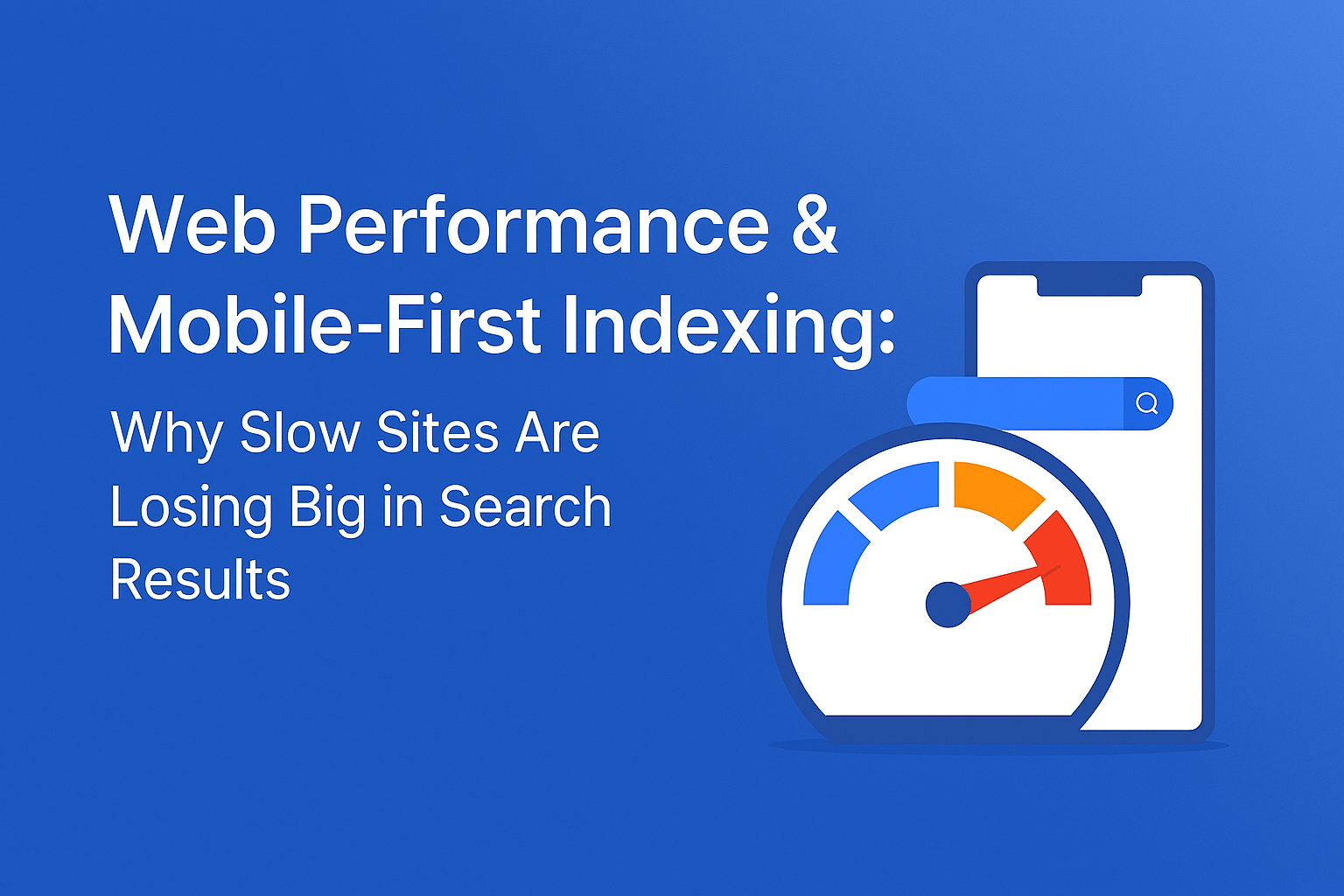Web Performance & Mobile-First Indexing: Why Slow Sites Are Losing Big in Search Results

In today’s digital world, web performance & mobile indexing are critical, as speed and responsiveness are no longer optional. With Google’s mobile-first indexing and user experience playing a central role in rankings, websites that fail to optimize for performance are falling behind. Slow websites not only frustrate users but also negatively impact search visibility, conversions, and overall online presence.
This article explores web performance & mobile-first indexing, why it matters, and actionable strategies to ensure your site stays competitive in search engine results pages (SERPs).
Understanding Mobile-First Indexing
Mobile-first indexing is Google’s approach to ranking websites primarily based on the mobile version of the site, rather than the desktop version. This shift reflects the increasing number of users accessing the internet via mobile devices.
Key Points About Mobile-First Indexing:
-
Google predominantly uses the mobile version for indexing and ranking.
-
Websites without mobile-optimized versions risk losing visibility.
-
Page speed and responsive design are crucial ranking factors.
Failing to prioritize mobile-first indexing can result in significant drops in search rankings. Sites that load slowly on mobile devices are penalized because Google considers mobile performance as a key indicator of overall user experience.
How Web Performance Impacts SEO
Web performance refers to how quickly and efficiently a website loads and functions across devices. Google’s algorithms are highly sensitive to page speed, and slow-loading pages lead to higher bounce rates and lower dwell times.
Core Web Vitals and SEO
Google has defined Core Web Vitals as metrics that measure user experience:
-
Largest Contentful Paint (LCP): Time taken to load the main content of a page.
-
First Input Delay (FID): Time taken for a page to become interactive.
-
Cumulative Layout Shift (CLS): Measures visual stability during page load.
Websites with poor scores in these metrics often rank lower in SERPs. Prioritizing web performance not only improves SEO but also boosts user engagement and conversion rates.
Why Slow Sites Are Losing Visibility
The modern internet user expects lightning-fast browsing experiences. Even a 1-second delay in page load time can reduce conversions by up to 7%.
Impacts of Slow Loading Sites:
-
Higher Bounce Rates: Visitors leave before interacting with content.
-
Lower Rankings: Google penalizes slow sites in SERPs.
-
Reduced Conversions: Sales, subscriptions, and lead generation suffer.
-
Poor User Experience: Damages brand reputation and credibility.
Google’s mobile-first indexing ensures that websites optimized for mobile speed are favored, meaning slow sites are increasingly invisible in search results.
Best Practices to Improve Web Performance
Improving web performance is essential to succeed in mobile-first indexing. Here are actionable strategies:
1. Optimize Images
-
Use compressed formats like WebP.
-
Enable lazy loading to reduce initial load time.
2. Minimize HTTP Requests
-
Combine CSS and JavaScript files.
-
Reduce third-party scripts that slow down loading.
3. Use a Content Delivery Network (CDN)
-
Distributes content globally to reduce latency.
-
Speeds up delivery of assets for international audiences.
4. Implement Browser Caching
-
Stores frequently used files locally on users’ devices.
-
Reduces load time on repeat visits.
5. Prioritize Mobile-First Design
-
Ensure responsive layouts for all devices.
-
Optimize tap targets, font sizes, and navigation.
6. Minify CSS, JavaScript, and HTML
-
Removes unnecessary characters and comments.
-
Improves loading time without altering functionality.
7. Monitor Core Web Vitals
-
Use tools like Google PageSpeed Insights and Lighthouse.
-
Regularly track performance and resolve issues promptly.
Case Study: Mobile Optimization & Search Visibility
A leading e-commerce site experienced a 20% drop in organic traffic due to slow mobile performance. After optimizing images, implementing a CDN, and reducing scripts, page speed improved by 60%, leading to:
-
35% increase in organic search traffic.
-
25% higher conversion rate.
-
Improved user engagement and reduced bounce rates.
This illustrates the tangible benefits of focusing on web performance & mobile indexing.
Monitoring & Tools for Web Performance
To maintain optimal performance, continuous monitoring is crucial. Recommended tools include:
-
Google PageSpeed Insights: Measures speed and suggests improvements.
-
GTmetrix: Detailed insights on load time, requests, and recommendations.
-
Lighthouse: Audits performance, accessibility, and SEO.
-
WebPageTest: Advanced testing for different devices and locations.
Using these tools helps identify bottlenecks, prioritize fixes, and track improvements in real time.
The SEO Advantage of Fast, Mobile-Optimized Sites
Websites that excel in web performance & mobile-first indexing gain a significant SEO advantage. Benefits include:
-
Higher SERP rankings.
-
Better visibility in mobile search results.
-
Enhanced user satisfaction and trust.
-
Increased retention, conversions, and revenue.
Google rewards fast, mobile-optimized websites, making performance a competitive differentiator in digital marketing.
Common Mistakes to Avoid
Even experienced site owners can make mistakes that harm performance:
-
Ignoring mobile optimization.
-
Using heavy, uncompressed images.
-
Overloading pages with unnecessary scripts.
-
Failing to monitor Core Web Vitals.
-
Relying solely on desktop optimization for SEO.
Avoiding these mistakes ensures your website stays competitive in Google’s mobile-first ecosystem.
In 2025 and beyond, speed, mobile optimization, and performance are no longer optional—they are essential. Websites that ignore web performance & mobile indexing risk losing visibility, traffic, and revenue. By optimizing your website, prioritizing mobile-first design, and monitoring performance metrics, you can secure a competitive advantage in search results.
Investing in web performance isn’t just about SEO—it’s about creating a seamless, satisfying experience for your users, which ultimately drives conversions and growth.
